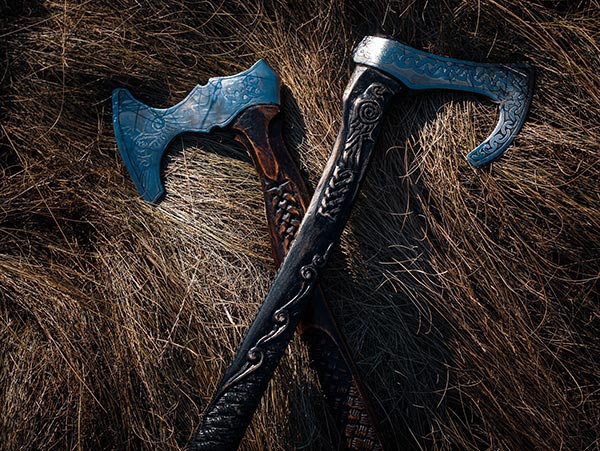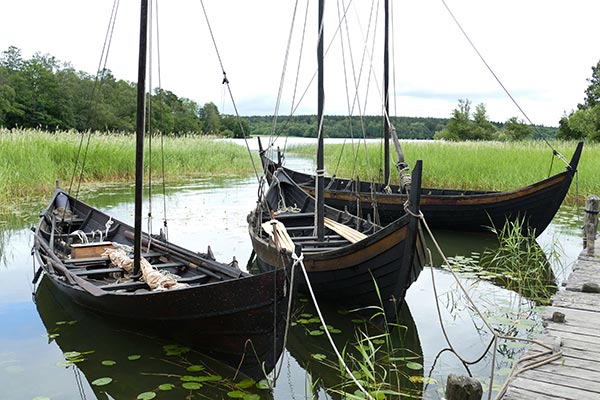Viking raids on Ireland began in 795AD and quickly progressed from hit-and-run raids to the building of settlements on coastal harbours such as Dublin, Waterford and Cork. As well as carrying off able young men and women to the slave-markets of northern Europe, the Vikings plundered and burned many villages in search of any sort of loot – especially silver, which they found at monastic sites in the form of crosses, chalices and other religious artefacts.

The Vikings soon found their way along navigable rivers such as the Shannon and the Bann. In 839AD the Norwegian leader Turgesius sailed a fleet onto Lough Neagh and, from there, they despoiled villages and religious settlements throughout the north of Ireland until 845AD.
Around a century later another fleet, led by Gormo Gamle, was active on the lough. From their encampment at Rhuba Menna (where the River Maine enters the lough near Shane’s Castle) they are known to have ravaged the shore-line between Antrim and Oxford Island (to which they gave the name, Ost-fjord)
It is evident from items found throughout the parish that Maghernagaw, on the lough-shore, did not escape their notice, and that Vikings ventured inland to Aghalee, Soldierstown and Trummery.
It is known that the Vikings brewed a type of ale from the heather which grew profusely in the area; although the drink does not seem to have caught on amongst local residents!
The Ordnance Survey memoirs detail the finding of several Danish forts, as well as many Viking artefacts – mill-stones, coins, axes and pipes. Most notable, perhaps, was the vessel uncovered at Shanport in 1826. It was 25ft in length, made from a single oak and ornamented with curious carvings – reminiscent of a Viking long-boat.
In 2012, a Polish metal-detectorist named Marcin Sadowski unearthed several items of Viking silver in a field at Soldierstown; these are now preserved at the Armagh County Museum.

Little specific information is available about Aghalee during the 12th – 14th centuries, except that which is common to Ulster during the period of Anglo-Norman influence or the campaign of Edward Bruce. However, one interesting story emerges nearby, at Portmore.
It is suggested that this area proved sufficiently remote to provide a hiding place for a William Tracey, rumoured to be one of the knights who murdered Archbishop Thomas Beckett in Canterbury Cathedral in 1170AD.
Marshal Bagenal’s ‘Description of Ulster’ (1586) states that this area was, at that time, inhabited by Englishmen, and that there was an old castle which bore the name of Sir Miles Tracie (implying a connection with the Tracey family). Lord Conway later erected a more substantial castle at Portmore.
